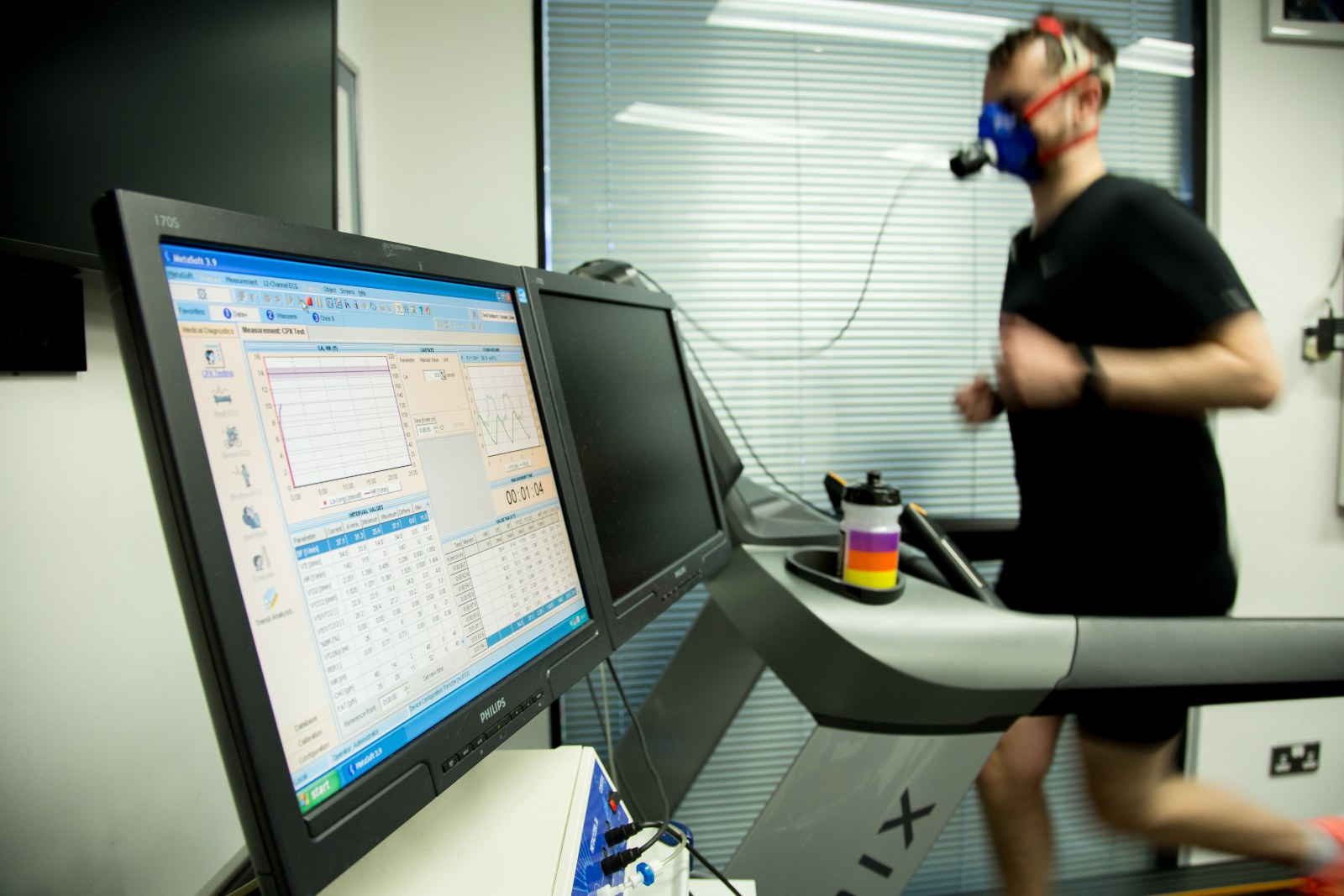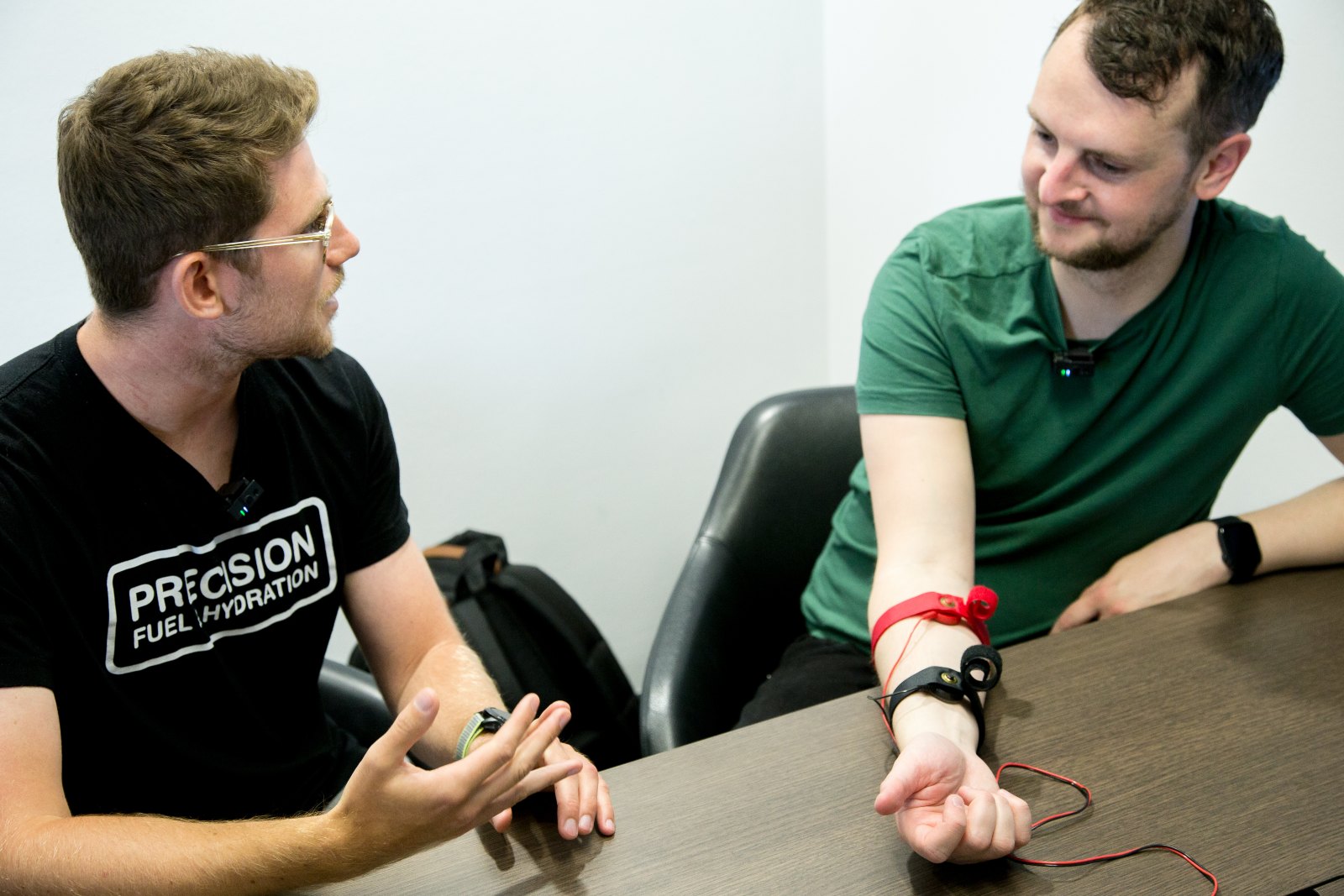Train like an F1 driver: An eye-opening experience into the insane fitness levels

If you have looked at an F1 driver, there is one aspect of their physique that seems more unusual than most.
To the outside world, F1 and indeed any motorsport can be dismissed as not one of the more physically challenging sports in the world – they are sitting down after all – but to those who have paid a bit more attention, F1 can be one of the most physically and mentally challenging competitions in the world.
From extreme heat to high levels of concentration and of course the G-force which brings us back to that notable physical feature – the neck.
Drivers will regularly face up to 6G going through a corner and it is easy to forget that this figure means their own bodies suddenly feel six times heavier.
Take Max Verstappen for example. He weighs roughly 72kg so under 6Gs, his body weight balloons to 432kg which is roughly the same as a grand piano.
The neck, with drivers’ needing to keep their eyes on the road, does a lot of metaphorical and literal heavy lifting and everyone will have seen images of F1 stars with their head in what appears to be a rudimental catapult system.
That image was exactly what came to mind when an email landed in my inbox one afternoon asking if I wanted to ‘Train like an F1 driver’.
The invite was from a company called Precision Fuel & Hydration which works with athletes to find the perfect way to keep them hydrated during high-stress sports and invited me down to the Porsche Human Performance Centre, which is situated inside Porsche’s base directly next to the Silverstone circuit.
The email promised to put me through my paces and see how I compared to motorsport’s best and it is about now that I should provide some context on my own fitness. The highlight of my athletic career was competing the Manchester Marathon but at 28, my metabolism is approaching me in the rear view mirror and it won’t be long until the blue flags are shown.
With either a healthy dose of optimism or foolishness, I arrived at the centre at 9AM sharp where I met Jack Wilson and Tristen Reed who are both Porsche Human Performance Centre sports scientists.
测试他们的设计对我来说是相同的es they used with their athletes in order to determine how fit they were but also train specific areas that are needed when driving.
The first was a routine measurement of my height and weight (the labelling of slightly overweight cut deep) before arriving at a machine designed to test my reflexes known as a BATAK.
It is one that many will be familiar with and flashes lights in random spots around you to see how good your peripheral vision is and how quick you can react. Hoping to do better than the last time I used one of these machines which was at the launch of F1 Arcade and following a number of free cocktails, I was happy with my score until I learned it was just over half what an F1 driver could do. That would be a similar theme throughout the day.
Next up was a test of my hand strength, a vital skill for drivers considering the toll that is placed over the course of a race weekend. To test this, the instructors handed me what can best be described as an alien ray gun looking device and asked me to put my hand out horizontally from my body then squeeze as hard as I could until my hand had returned to my side.
I measured 45.5 Kilogram-force (kgf) in my dominant right hand and 38.1kgf in my left hand which was again, well short of the 60kgf expected of an F1 driver.
Next up was the test I had been looking forward to and the one most synonymous with F1 training, neck strength.
为了验证这一点,我坐在长椅上,把我的手a barbell in a position. My head was then strapped into a device that allowed the instructors to pull at a certain G and see how well my neck would fare against the pressure.





It started off okay with 1.5G meaning that my head felt 1.5 times heavier than it usually did and even at 2G my neck was standing firm. But when it hit 2.5G, suddenly I felt myself unable to keep my head straight and the instructors decided it was best to stop there, showing just how strong F1 drivers are considering they must endure forces almost three times that.
After the muscular activities were done, the next focus was on cardio but first, it was time for a mental test. I was sat in front of a laptop and presented with a simple task of pushing the correct button on the keyboard in response to which colour I was seeing on screen. The difficulty though came in the fact that the words were often saying different colours than what the actual colour was, requiring your brain to ignore some information and pass the test.
I put it down to my years of playing Xbox that this was actually the area I performed best at but the purpose of this test was not to make me think that those years of playing Halo was time well spent – but instead to test how my brain functioned in two different states.
The first time I took the test was when I was relaxed and thinking clearly but the next time, my head was a little more foggy.
我的大脑处于激动状态,我开始跑步nning on a treadmill but while I was doing so, my mouth was hooked up to a breathing mask that Darth Vader may have once used. The speed of the treadmill increased every minute until I could run no more, at which point they also had a measurement of my maximum heart rate and the amount of oxygen I could draw in with each breath.




I jumped off the treadmill but there was no time to rest for I was immediately asked to do the mental test again and while I made no errors, my reaction time was a lot slower as I found my brain took a few more seconds to register what I was looking at. The purpose of this test is to allow athletes to continue thinking clearly even if they are under high stress.
Imagine during the opening lap of a grand prix where your adrenaline is flowing and there are 19 obstacles around you. You need your brain to work at its maximum and not take a second to register things hence why this training is so beneficial.
With a healthy dose of sweat now coming off my body, there was just one final task left in the physical part of my day and that was acclimatisation training. As we all know, Formula 1 races in some very hot countries and that can be brutally punishing for a driver.
With the air temperature hot and humid, their condition is only made worse as they are just mere inches away from a firing engine and all the heat that produces.
The only way you can train for this, then, is by doing so in hot climates and instead of flying out to Dubai or Qatar, you can instead hop inside a small room that has been heated to a high temperature.
I may have only done five minutes on the treadmill in this room but I could already feel the differences in my performance with each stride feeling far heavier than the cold British temperatures I am accustomed to.
After the physical examination was over, it was time to learn about something I had put almost zero thought into before the day – sweat. I naively thought that all sweat was the same but I soon learned that each of us has a genetic makeup determining how much sodium we lose as sweat.
The more sodium you lose, the more dehydrated you are so it is hugely important for an athlete to know this and plan accordingly. To test this they had a machine that was able to encourage sweat to come from a small circle on my arm then attached a device that would suck up that sweat into a small tube.




That sweat was then transferred into another machine at which point it provided a measurement of 1167mg of sodium per litre of sweat which would put me in the high bracket.
So if I was an F1 driver, I would then look to supplement my training with sodium in order to stay hydrated which is where Precision Fuel & Hydration come in. They make gels or effervescent tablets that provide the exact amount of sodium I would need before, during and after any kind of physical event.
The day ended there as I returned to my non-F1 driver lifestyle but it served as an eye-opening experience as to just what it takes from a physical point to even be able to survive driving a lap, let alone be quick enough to actually compete.
My thanks go to the Precision Fuel & Hydration team as well as Jack Wilson and Tristen Reed at the Porsche Human Performance Centre. I’m just hoping the scores I recorded were not the lowest they’ve ever seen…
Precision Fuel & Hydration (PF&H) is one of the world’s leading sports hydration and fuelling consultancies.
Founded in 2011 by former elite endurance athlete and leading Sports Scientist Andy Blow, it has developed personalised hydration and fuelling strategies for tens of thousands of athletes around the world, including some of the biggest names in global sport.
The Dorset-based firm offers sweat testing at more than 50 centres in over 20 countries around the world, including the UK, USA, Australia and Canada.
It uses patented and medical-grade technology to develop bespoke hydration and fuelling plans for elite athletes across a variety of sports, including athletics, football, rugby, F1, American football, basketball and baseball.
Andy and the PF&H team work with athletes to help them understand their hydration requirements and provide a range of products to manage their performance needs.You can find out more here – https://www.precisionfuelandhydration.com/
Porsche Human Performance (PHP) is one of the world’s leading applied sports science laboratories.
Based at the UK’s famed Silverstone race track, it is equipped with state-of-the-art technology to help athletes fulfil their potential.
Founded in 2008 by Sports Scientists Andy Blow and Eliot Challifour, PHP was originally launched to enable motorsport athletes to understand and improve fitness levels.
Since then, it has been used by an array of professional athletes from sports including football, boxing and athletics.
The lab offers a full range of physiological testing, including a heat chamber for specialist acclimation training, VO2 max testing, which determines the maximum amount of oxygen you can consume during exercise, and an Advanced Sweat Test, which helps athletes understand their own individual sweat composition.
You can find out more here –https://www.porsche.com/silverstone/en/human-performance-center/


